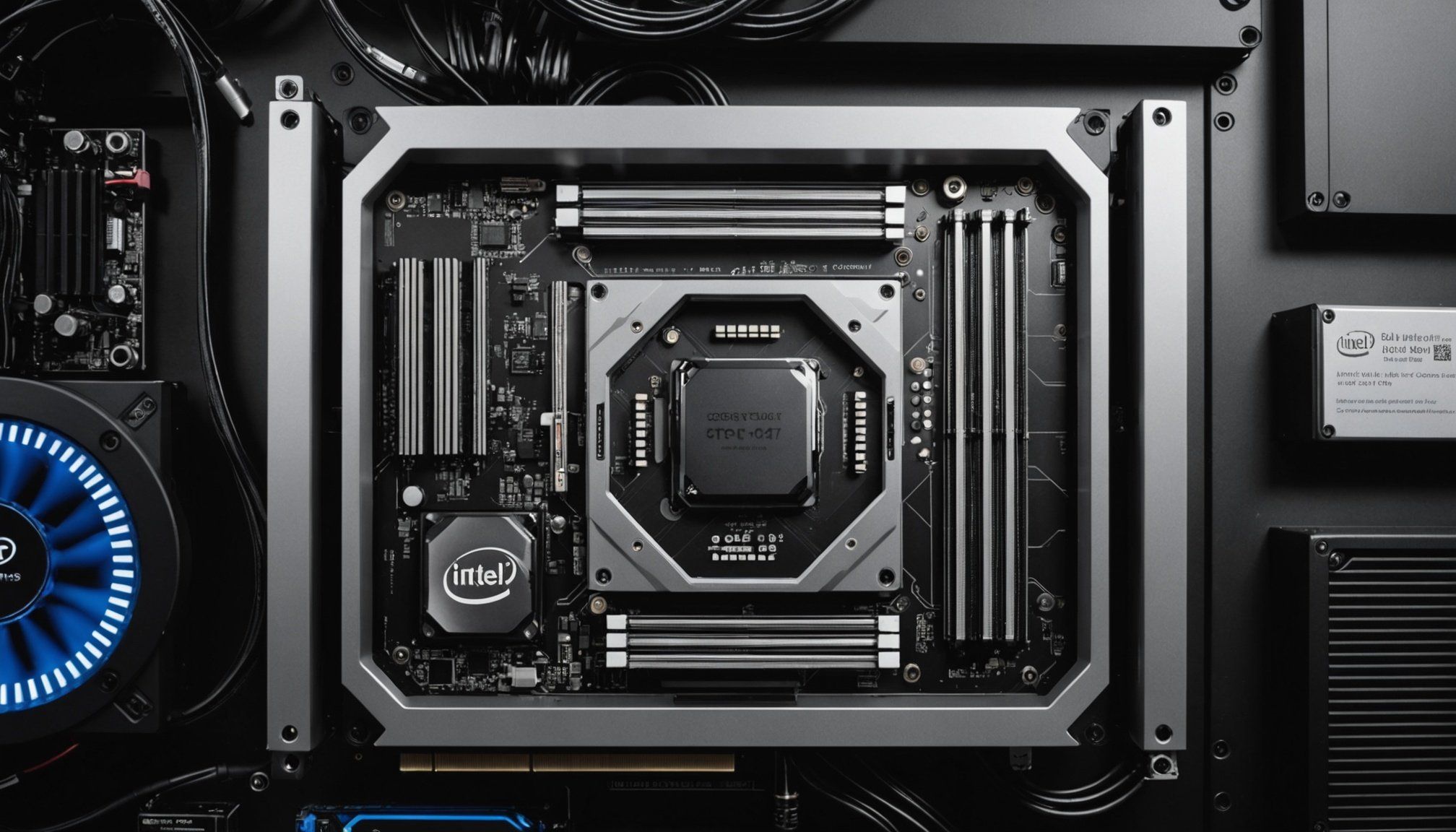Understanding Small Form Factor Cases
Grasping the intricacies of small form factor cases is vital in crafting a high-performance computer system within a compact space. What makes case design so crucial is its impact on airflow and cooling efficiency. The design directly influences the path air travels inside the case, affecting how well components remain cool under load.
When selecting a small form factor case, consider the optimal layout to ensure that there are minimal obstructions and adequate space for air circulation. The key dimensions typically range between 10 to 15 litres in volume. Internal configurations in these cases are pivotal; strategic placement of the motherboard, power supply, and storage can make a significant difference. Selecting setups that allow smooth airflow paths can enhance cooling performance without increasing fan speed.
Topic to read : Enhanced Cooling: The Definitive Handbook for Maximizing Airflow in Your Corsair Crystal Series 680X with Dual GPU Configurations
The benefits of maintaining a compact layout inherently include saving space and being more aesthetically accommodating. Additionally, a well-designed layout can reduce the need for excessive cooling fans, lowering noise levels in the process. By maximising internal efficiency, compact cases manage to deliver exceptional performance while maintaining minimal space usage, proving indispensable in modern computing environments.
Airflow Optimization Strategies
Effective airflow management is fundamental in achieving optimal cooling performance in small form factor cases. Establishing precise cooling paths ensures cool air reaches all components efficiently. Identify and map out these paths by considering internal obstructions and crafting routes where air can flow unobstructed.
Have you seen this : Unleashing Gaming Excellence: Building a Top-Tier Rig with Intel Core i7-11700K & NVIDIA RTX 3070 in the Stunning Lian Li PC-O11 Dynamic
Vent placement plays a crucial role in facilitating smooth airflow. Positioning vents strategically allows hot air to exit the case while pulling in fresh air, maintaining a consistent cooling process. Techniques for achieving a balanced intake and exhaust system include ensuring equal numbers of intake and exhaust fans and placing them at opposite ends of the case for effective air movement.
Strategic positioning of case fans is another essential factor. Opt for larger fans where possible, as they can move more air at lower speeds, reducing noise. Position intake fans near heat-generating components like the CPU or GPU to optimise cooling potential. Similarly, place exhaust fans at the top or rear of the case to expel warm air effectively.
By understanding and implementing these airflow strategies, users can ensure that their small form factor cases maintain efficient cooling, ultimately leading to improved system performance and longevity.
Cooling Component Selection
Selecting optimal cooling solutions is vital for maintaining the efficiency and longevity of small form factor cases. Understanding the compatibility of CPU coolers like those for the Intel Core i7-10700K is crucial. This CPU demands robust cooling to manage its thermal output effectively in compact setups.
When considering air coolers versus liquid cooling setups, it’s essential to weigh their advantages. Air coolers provide reliable thermal management and are generally easier to install and maintain. Conversely, liquid cooling systems offer superior thermal efficiency and can handle higher thermal loads, making them highly suitable for overclocked CPUs, though they require more initial setup and maintenance.
SFF-compatible fans play a significant role in ensuring proper airflow within small cases. These fans are designed to fit restricted spaces while delivering adequate air movement. Prioritising features like reduced noise levels and high static pressure can make a tangible difference in maintaining optimal internal temperatures. Recommended case fans should be carefully chosen for efficiency and noise considerations, with larger fans operating at lower revolutions being an ideal choice. They effectively dissipate heat without generating excessive noise, contributing to a balanced and quiet computing environment.
Thermal Management Practices
Effective thermal performance in small form factor cases requires vigilant temperature monitoring. Installing software tools for real-time temperature tracking ensures components like the CPU and GPU remain within safe operating ranges. Programs like HWMonitor or Core Temp provide accurate readings of system temperatures, empowering users with valuable insights.
Efficient cooling depends heavily on maintaining optimal temperatures. Strategies include configuring fan speed settings in the BIOS or using software to create custom profiles based on load, maximising cooling potential when necessary. Keeping airflow paths obstruction-free and dust-free is paramount in preserving efficient cooling.
The significance of proper thermal paste application cannot be overstated. Ensuring a thin, even layer on the CPU surface facilitates better heat transfer to coolers, which is crucial for sustaining ideal temperatures. Regular maintenance, such as reapplying thermal paste when cleaning components, helps maintain its effectiveness over time.
Key Practices:
- Monitor temperatures regularly using trusted software.
- Manage fan speeds to adapt to varying thermal demands.
- Apply thermal paste correctly for optimal heat dissipation.
Implementing these practices fosters a stable and high-performance environment, extending the lifespan of components housed within small form factor cases.
Real-World Examples and Case Studies
Performance benchmarks in small form factor builds are critical for evaluating effective cooling strategies and setups. By analysing successful projects that use an Intel Core i7-10700K, users can gain valuable insights into achieving high thermal performance in compact spaces.
Benchmarking various cooling solutions demonstrates their impacts on system stability and efficiency. In setups leveraging both air and liquid cooling, effective designs ensure the i7-10700K remains cool even under intense workloads, underscoring the importance of strategic airflow management.
User experiences from the community also shed light on best practices. Many enthusiasts stress that meticulous attention to case layout and design ultimately contributes to superior performance. Examples from forums and reviews reveal that optimising factors such as vent placement and choosing SFF-compatible fans can enhance cooling efficiency.
Consider these points:
- Custom builds featuring innovative cooling paths show the effectiveness of detailed planning in small spaces.
- Community case reviews often highlight case design adjustments that lead to improved thermal outcomes.
- Sharing experiences around temperature monitoring tools helps refine approaches to thermal management.
By understanding these examples, users can effectively harness their setups’ full potential, ensuring reliability and longevity.
Visualization and Diagrams
In the realm of small form factor cases, understanding airflow dynamics is crucial. Visual aids like airflow diagrams provide valuable insights into how air moves within these compact spaces. By clearly mapping out the flow of air, users can identify potential obstructions and refine their configurations for improved performance.
Detailed cooling layouts are critical to designing efficient systems. By examining various layout diagrams, users can better position components to avoid disrupting smooth airflow. These visual insights enable enthusiasts to optimize fan placements and vent openings, enhancing the effectiveness of their cooling strategies.
Thermal maps serve as another vital tool, highlighting temperature variations across different areas of the case. By interpreting these maps, users can pinpoint hotspots and adjust their cooling solutions accordingly. This practice ensures even temperature distribution and prevents overheating, thus safeguarding components.
Visual aids help demystify complex airflow topics, transforming data into tangible insights. Through well-designed diagrams and maps, builders can make informed decisions to maximize cooling efficacy and safeguard their systems. These tools not only aid in understanding but also enhance the practical application of high-performance cooling strategies.











